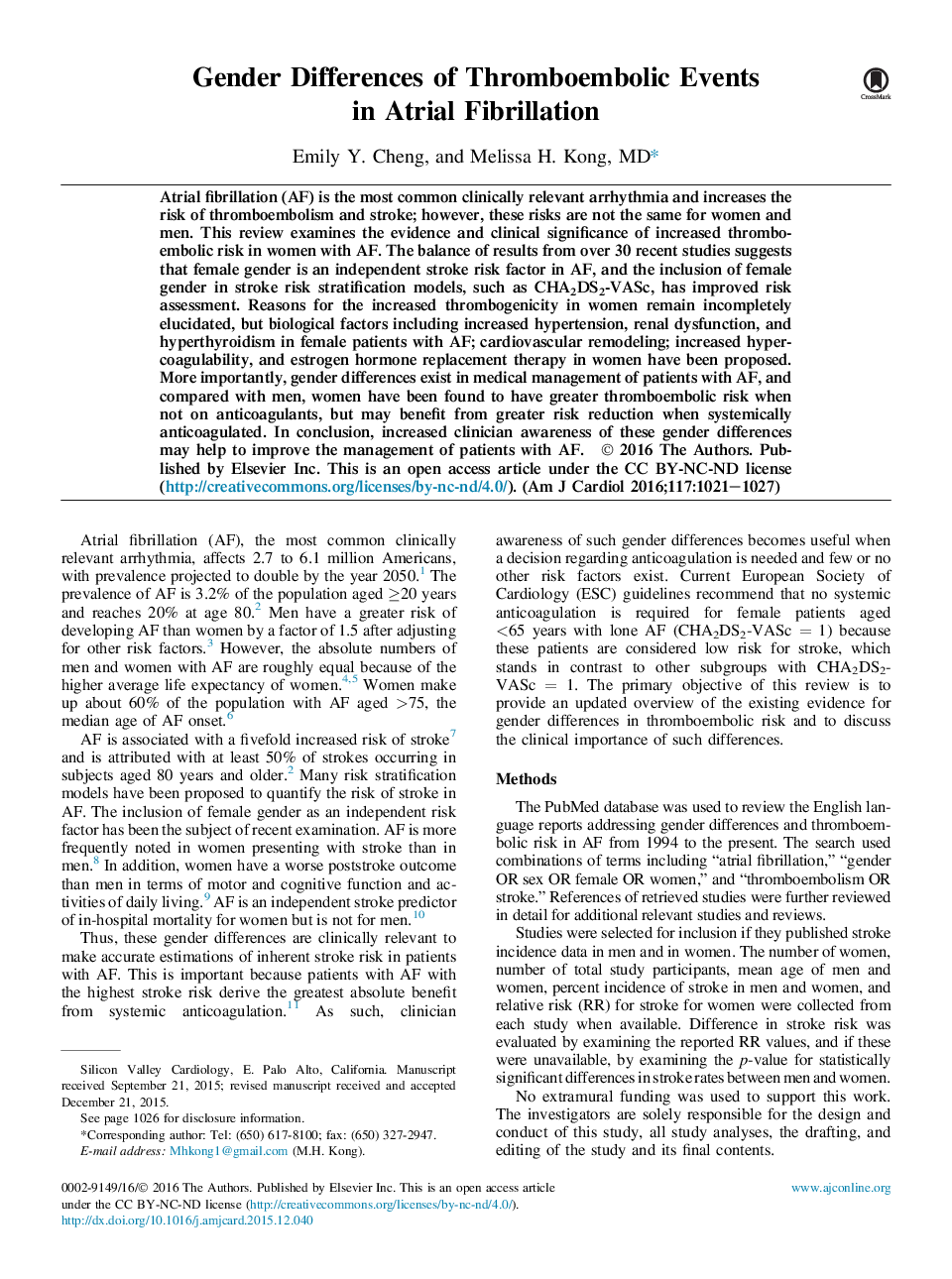| Article ID | Journal | Published Year | Pages | File Type |
|---|---|---|---|---|
| 5929623 | The American Journal of Cardiology | 2016 | 7 Pages |
Atrial fibrillation (AF) is the most common clinically relevant arrhythmia and increases the risk of thromboembolism and stroke; however, these risks are not the same for women and men. This review examines the evidence and clinical significance of increased thromboembolic risk in women with AF. The balance of results from over 30 recent studies suggests that female gender is an independent stroke risk factor in AF, and the inclusion of female gender in stroke risk stratification models, such as CHA2DS2-VASc, has improved risk assessment. Reasons for the increased thrombogenicity in women remain incompletely elucidated, but biological factors including increased hypertension, renal dysfunction, and hyperthyroidism in female patients with AF; cardiovascular remodeling; increased hypercoagulability, and estrogen hormone replacement therapy in women have been proposed. More importantly, gender differences exist in medical management of patients with AF, and compared with men, women have been found to have greater thromboembolic risk when not on anticoagulants, but may benefit from greater risk reduction when systemically anticoagulated. In conclusion, increased clinician awareness of these gender differences may help to improve the management of patients with AF.
